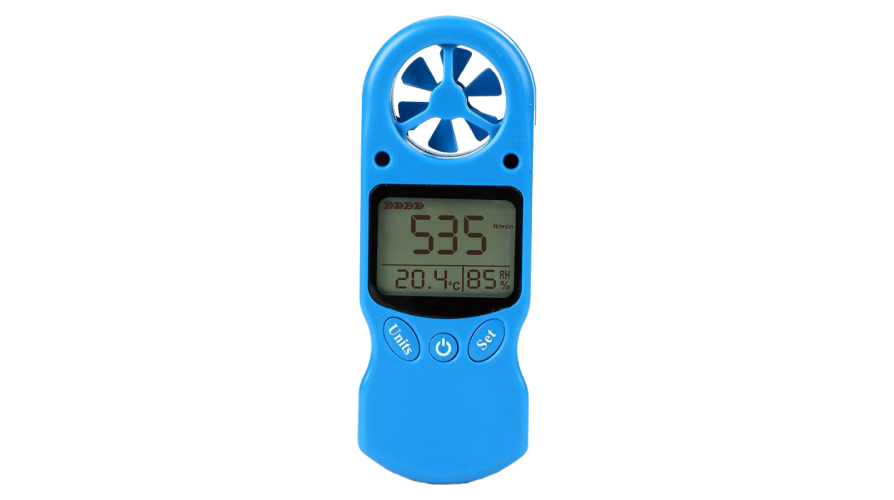Checking Out the Features and Benefits of Anemometers for Weather Fanatics and Experts
From mug anemometers to sonic anemometers, each kind brings its unique collection of benefits and applications, shedding light on various aspects of atmospheric problems. As we dive right into the features and benefits of anemometers, a deeper understanding emerges not just of dominating climate phenomena however additionally of the more comprehensive ramifications for fields like wind power manufacturing and ecological research.
Significance of Anemometers in Climate Tracking
Anemometers play a critical function in climate surveillance by supplying precise measurements of wind rate, aiding in forecasting and understanding climate patterns. These tools, ranging from traditional cup anemometers to modern-day ultrasonic anemometers, are vital for meteorologists, scientists, and weather fanatics alike.

Sorts Of Anemometers and Their Applications
With the important role anemometers play in weather tracking and projecting, comprehending the different sorts of these tools and their applications comes to be vital for professionals and lovers in the field. The most common kinds of anemometers consist of cup anemometers, vane anemometers, hot-wire anemometers, and ultrasonic anemometers. Cup anemometers include three or four cups mounted on horizontal arms that rotate with the wind, gauging its speed. Vane anemometers, on the other hand, use an openly revolving vane to align with the wind direction, giving both wind speed and direction dimensions. Hot-wire anemometers operate based on the concept of convective heat transfer, where the cooling effect of the air circulation is measured to figure out wind speed. Ultrasonic anemometers make use of ultrasonic acoustic wave to determine wind rate and direction properly.
Each kind of anemometer has its one-of-a-kind advantages and applications. Cup anemometers are durable and suitable for general climate surveillance, while vane anemometers are preferred for directional measurements. Hot-wire anemometers are delicate to reduced air speeds, making them ideal for interior environments. Ultrasonic anemometers are non-intrusive and supply high precision, usually utilized in study and specialized climate surveillance applications. Recognizing the characteristics and applications of each kind of anemometer is essential for picking one of the most suitable instrument for specific climate checking requirements.
Benefits of Utilizing Anemometers in Projecting
In meteorology, the application of anemometers uses very useful benefits for enhancing the accuracy of climate projecting. Anemometers gauge wind rate and instructions, offering crucial information for predicting weather patterns. By including wind data into projecting versions, meteorologists can much better understand the motion of weather condition systems, expect adjustments in weather, and problem extra accurate forecasts.
Moreover, anemometers play an important function in examining possible weather hazards. Keeping track of wind rates helps forecasters predict serious weather condition occasions such as storms, hurricanes, and winter storms with better accuracy. This early warning system enables authorities to provide timely signals and carry out required safety actions, decreasing the risks to life and property.
In addition, anemometers assist in maximizing renewable power manufacturing. By assessing wind patterns, meteorologists can recognize ideal areas for wind farms and forecast power result, contributing to the reliable generation of wind power.

Anemometers in Wind Energy Production
Given the crucial duty anemometers play in giving accurate wind information for weather projecting and hazard assessment, their significance expands to the world of wind power production. Anemometers are necessary tools in the area of wind power, where the dimension of wind speed and direction is crucial for establishing the feasibility and efficiency of wind generator installments. By precisely gauging wind rates at differing heights, anemometers my sources assist maximize the placement and layout of wind generators to take full advantage of power outcome.
In wind ranches, anemometers are purposefully positioned to collect real-time wind information that is utilized to assess the potential energy manufacturing of a site. This data contributes in identifying the financial stability of wind energy tasks and in projecting energy generation to guarantee grid stability. Furthermore, anemometers aid in keeping an eye on wind problems to enhance generator efficiency, stop damage from high winds, and ensure the safety of personnel working in the location of wind turbines.
Enhancing Climate Comprehending With Anemometers

Anemometers play a key duty in improving our understanding of microclimates. These localized weather can differ considerably from more comprehensive local forecasts, making it important to have accurate data for details locations. anemometer. By tactically putting anemometers in different locations, researchers can collect detailed info on just how wind behaves in various terrains, urban environments, or bodies of water
Moreover, anemometers add to improving weather condition projecting designs by giving real-time information on wind habits. This details is specifically important for forecasting severe climate events, maximizing agricultural practices, and supporting markets like aeronautics and maritime navigating. Generally, anemometers are invaluable tools that allow us to dive much deeper right into the intricacies of weather condition systems, ultimately leading to more precise forecasts and better-informed decisions.
Conclusion
In verdict, anemometers play an important function in weather condition tracking and forecasting by determining wind speed and instructions. Anemometers also have applications in wind power manufacturing, further highlighting their relevance in both weather forecasting and eco-friendly power sectors.
From mug anemometers to sonic anemometers, each type brings its special set of applications and advantages, losing light on different facets of atmospheric conditions. These tools, varying from typical cup anemometers to modern ultrasonic anemometers, are essential for meteorologists, researchers, and climate lovers alike. The most usual kinds of anemometers include cup anemometers, vane anemometers, hot-wire anemometers, and ultrasonic anemometers. Cup anemometers are suitable and robust for basic weather condition monitoring, while vane anemometers are preferred for directional dimensions. Anemometers are vital instruments in the More Bonuses field of wind power, where the measurement of wind speed and instructions is vital for identifying the expediency and efficiency of wind generator installations.